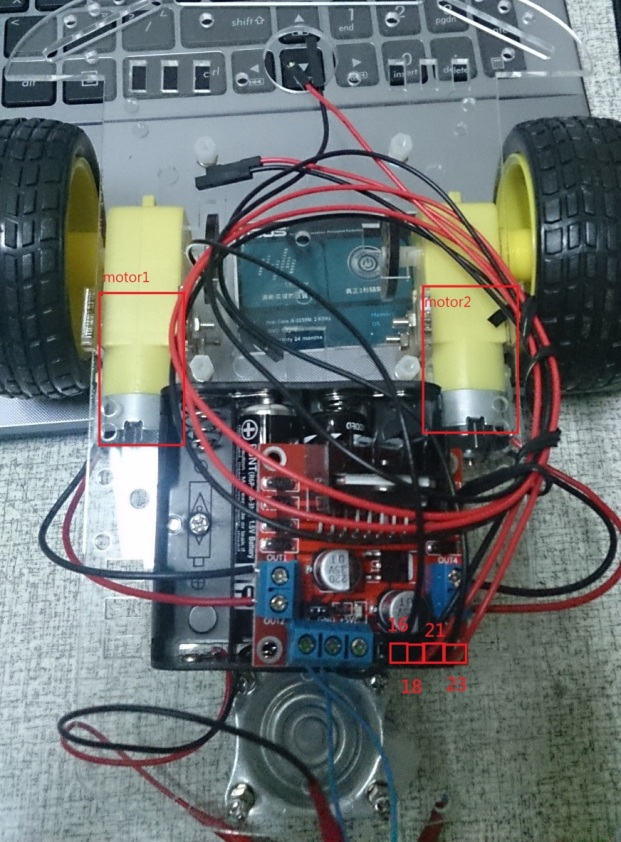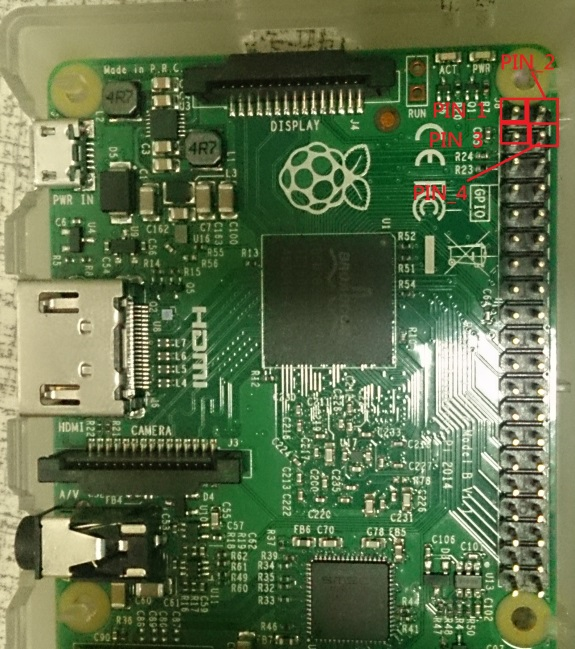1
2
3
4
5
6
7
8
9
10
11
12
13
14
15
16
17
18
19
20
21
22
23
24
25
26
27
28
29
30
31
32
33
34
35
36
37
38
39
40
41
42
43
44
45
46
47
48
49
50
51
52
53
54
55
56
57
58
59
60
61
62
63
64
65
66
67
68
69
70
71
72
73
74
75
76
77
78
79
80
81
82
83
84
85
86
87
88
89
90
91
92
93
94
95
96
97
98
99
100
101
102
103
104
105
106
107
108
109
110
111
112
113
114
115
116
117
118
119
120
121
122
123
124
125
126
127
128
129
130
131
132
133
134
135
136
137
138
139
140
141
142
143
144
145
146
147
148
149
150
151
152
153
154
155
156
157
158
159
160
161
162
163
164
165
166
167
168
169
170
171
172
173
174
175
176
177
178
179
180
181
182
183
184
185
186
187
188
189
190
191
192
193
194
195
196
197
198
199
200
201
202
203
204
205
206
207
208
209
210
211
212
213
214
215
216
217
218
219
220
221
222
223
224
225
226
227
228
229
|
import copy
import pyaudio
import wave
import threading
import RPi.GPIO as GPIO
from subprocess import Popen
from time import sleep
from sphinxbase import *
from pocketsphinx import *
from array import array
from struct import pack
from sys import byteorder
from array import array
from Queue import Queue, Full
THRESHOLD = 5000
CHUNK_SIZE = 1024
BUF_MAX_SIZE = CHUNK_SIZE * 10
SILENT_CHUNKS = 1 * 16000 / 1024
FORMAT = pyaudio.paInt16
FRAME_MAX_VALUE = 2 ** 15 - 1
NORMALIZE_MINUS_ONE_dB = 10 ** (-1.0 / 20)
RATE = 16000
CHANNELS = 1
TRIM_APPEND = RATE / 4
GPIO.setmode(GPIO.BOARD)
Motor1A = 16
Motor1B = 18
Motor2A = 23
Motor2B = 21
def initGPIO():
GPIO.setup(Motor1A,GPIO.OUT)
GPIO.setup(Motor1B,GPIO.OUT)
GPIO.setup(Motor2A,GPIO.OUT)
GPIO.setup(Motor2B,GPIO.OUT)
def initConfig():
config = Decoder.default_config()
config.set_string('-hmm', "tdt_sc_8kadapt")
config.set_string('-lm', "cmd.lm")
config.set_string('-dict', "cmd.dic")
config.set_string('-logfn', "/tmp/log.txt")
return config
def is_silent(data_chunk):
"""Returns 'True' if below the 'silent' threshold"""
return max(data_chunk) < THRESHOLD
def normalize(data_all):
"""Amplify the volume out to max -1dB"""
normalize_factor = (float(NORMALIZE_MINUS_ONE_dB * FRAME_MAX_VALUE)
/ max(abs(i) for i in data_all))
r = array('h')
for i in data_all:
r.append(int(i * normalize_factor))
return r
def trim(data_all):
_from = 0
_to = len(data_all) - 1
for i, b in enumerate(data_all):
if abs(b) > THRESHOLD:
_from = max(0, i - TRIM_APPEND)
break
for i, b in enumerate(reversed(data_all)):
if abs(b) > THRESHOLD:
_to = min(len(data_all) - 1, len(data_all) - 1 - i + TRIM_APPEND)
break
return copy.deepcopy(data_all[_from:(_to + 1)])
def recordContent(stopped):
"""Record a word or words from the microphone and
return the data as an array of signed shorts."""
p = pyaudio.PyAudio()
stream = p.open(format=FORMAT, channels=CHANNELS, rate=RATE, input=True, output=True, frames_per_buffer=CHUNK_SIZE)
silent_chunks = 0
audio_started = False
data_all = array('h')
count=0
while not stopped.wait(timeout=0):
data_chunk = array('h', stream.read(CHUNK_SIZE))
if byteorder == 'big':
data_chunk.byteswap()
data_all.extend(data_chunk)
silent = is_silent(data_chunk)
if audio_started:
if silent:
silent_chunks += 1
if silent_chunks > SILENT_CHUNKS:
break
else:
silent_chunks = 0
elif not silent:
audio_started = True
sample_width = p.get_sample_size(FORMAT)
stream.stop_stream()
stream.close()
p.terminate()
data_all = trim(data_all)
data_all = normalize(data_all)
return sample_width, pack('<' + ('h' * len(data_all)), *data_all)
def driveMotor(cmd):
if cmd == '前進':
print '前進'
GPIO.output(Motor1A,GPIO.LOW)
GPIO.output(Motor1B,GPIO.HIGH)
GPIO.output(Motor2A,GPIO.HIGH)
GPIO.output(Motor2B,GPIO.LOW)
elif cmd == '後退':
print '後退'
GPIO.output(Motor1A,GPIO.HIGH)
GPIO.output(Motor1B,GPIO.LOW)
GPIO.output(Motor2A,GPIO.LOW)
GPIO.output(Motor2B,GPIO.HIGH)
elif cmd == '右轉':
print '右轉'
GPIO.output(Motor1A,GPIO.LOW)
GPIO.output(Motor1B,GPIO.HIGH)
GPIO.output(Motor2A,GPIO.LOW)
GPIO.output(Motor2B,GPIO.HIGH)
elif cmd == '左轉':
print '左轉'
GPIO.output(Motor1A,GPIO.HIGH)
GPIO.output(Motor1B,GPIO.LOW)
GPIO.output(Motor2A,GPIO.HIGH)
GPIO.output(Motor2B,GPIO.LOW)
elif cmd == '停止':
print '停止'
GPIO.output(Motor1A,GPIO.LOW)
GPIO.output(Motor1B,GPIO.LOW)
GPIO.output(Motor2A,GPIO.LOW)
GPIO.output(Motor2B,GPIO.LOW)
sleep(1)
def recognize(stopped, q, config):
while True:
if stopped.wait(timeout=0):
break
content = q.get()
if content is not None:
decoder = Decoder(config)
decoder.start_utt()
decoder.process_raw(content,False,True)
decoder.end_utt()
cmds = decoder.hyp().hypstr.split(' ')
for cmd in cmds:
driveMotor(cmd)
else:
print "WTF!!"
def listen(stopped, q):
stream = pyaudio.PyAudio().open(
format=pyaudio.paInt16,
channels=2,
rate=44100,
input=True,
frames_per_buffer=1024,
)
while True:
if stopped.wait(timeout=0):
break
try:
sample_width, data = recordContent(stopped)
q.put(data)
except Full:
pass
def main():
stopped = threading.Event()
q = Queue(maxsize=int(round(BUF_MAX_SIZE / CHUNK_SIZE)))
config = initConfig()
initGPIO()
listen_t = threading.Thread(target=listen, args=(stopped, q))
listen_t.start()
recognize_t = threading.Thread(target=recognize, args=(stopped, q, config))
recognize_t.start()
try:
while True:
listen_t.join(0.1)
recognize_t.join(0.1)
except KeyboardInterrupt:
stopped.set()
if __name__ == '__main__':
main()
|



